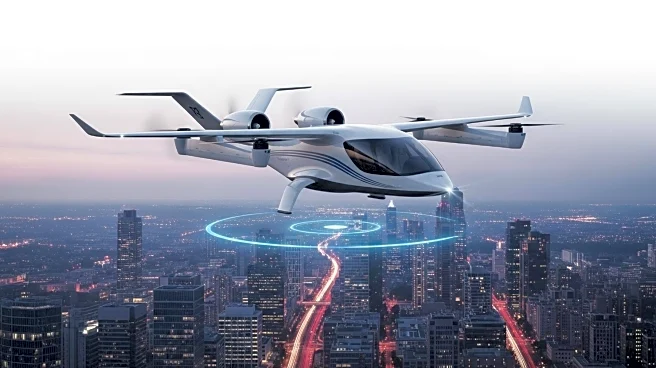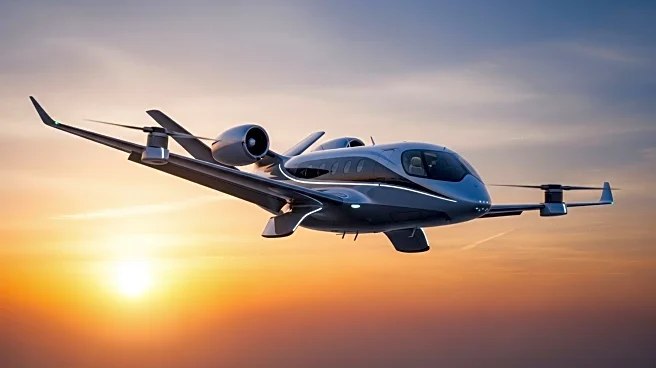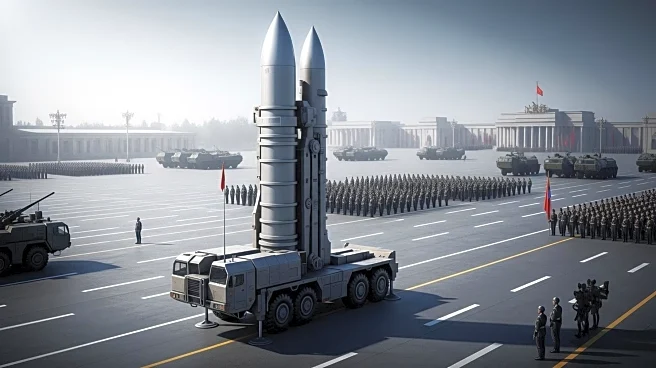What's Happening?
EHang Holdings has introduced the VT35, a long-range, pilotless electric vertical take-off and landing (eVTOL) aircraft, at an event in Hefei, Anhui Province, China. The VT35 is designed for medium and long-distance applications, such as intercity routes of up to 200 kilometers. It features a tandem-wing, two-seat configuration with eight distributed lift propellers for vertical take-off and landing, and a pusher propeller with fixed wings for cruise flight. The aircraft has a maximum takeoff weight of 950 kilograms and a range of 200 kilometers when fully loaded. EHang has entered into cooperation agreements with Zhejiang Zhiyi UAV Technology and Hainan Fuma General Aviation Industry Development for the purchase, promotion, and operational deployment of the VT35. A platform company under the Hefei Municipal Government has also placed initial orders for the aircraft.
Why It's Important?
The launch of the VT35 marks a significant step in the development of urban air mobility, potentially transforming intercity travel by offering a sustainable and efficient alternative to traditional transportation methods. EHang's focus on pilotless technology and autonomous flight capabilities could lead to reduced operational costs and increased safety in urban environments. The establishment of a production hub in Hefei and partnerships with local companies indicate strong support for the integration of eVTOL technology into existing transport networks. This development could pave the way for widespread adoption of eVTOLs, impacting industries such as logistics, tourism, and public transportation.
What's Next?
EHang plans to continue developing its urban air mobility infrastructure, including transportation hubs and uncrewed aerial vehicle services, in collaboration with China Communications Information & Technology Group. The VT35 is progressing through airworthiness certification, with EHang applying technical and regulatory experience from its EH216-S program. Future adaptations of the VT35 platform, such as a tilt-rotor model, are being considered to expand its use cases. The company aims to create a networked low-altitude transport system for intra-city and intercity routes in major metropolitan clusters.
Beyond the Headlines
The introduction of the VT35 highlights the growing interest in sustainable urban transportation solutions and the potential for eVTOLs to reduce traffic congestion and pollution in cities. The development of pilotless aircraft raises ethical and regulatory questions regarding safety, privacy, and airspace management. As eVTOL technology advances, it may lead to shifts in urban planning and infrastructure development, requiring new policies and regulations to ensure safe and efficient integration into existing systems.












